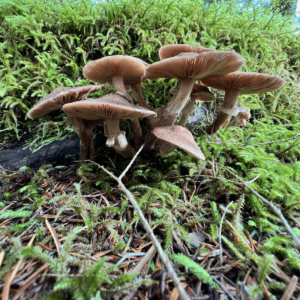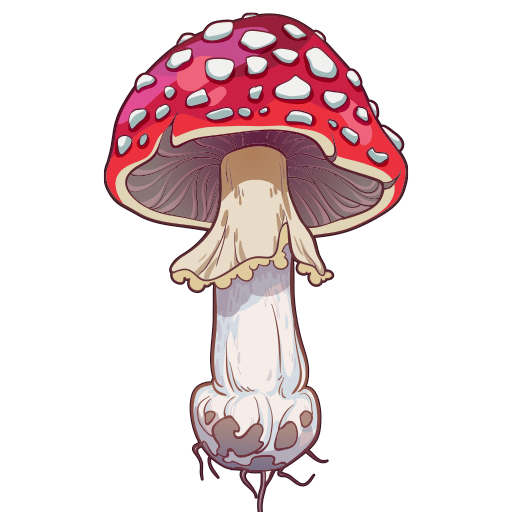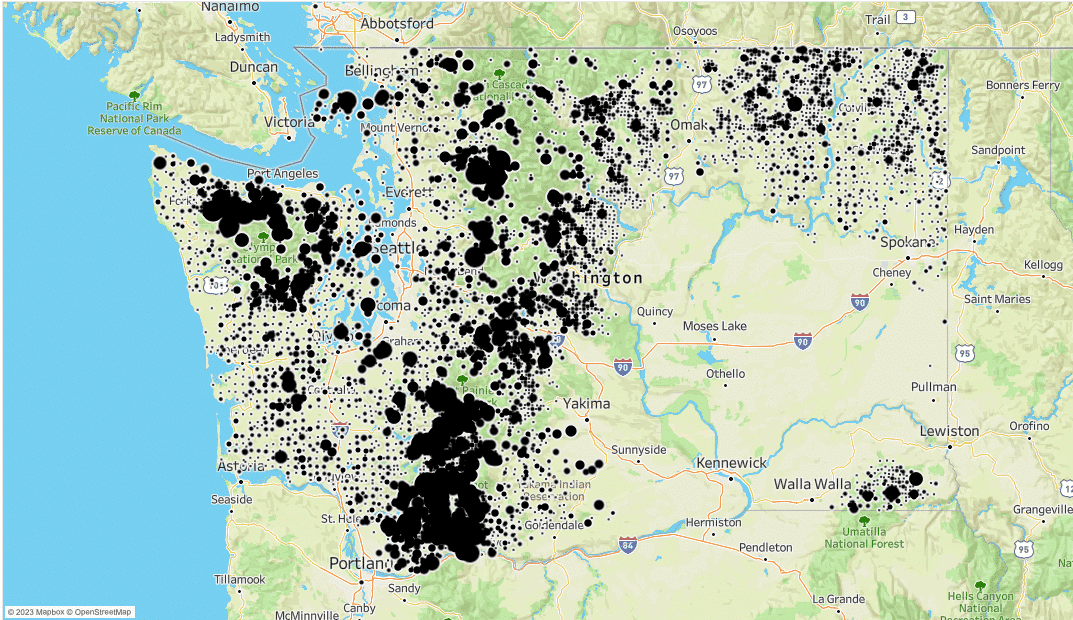Pseudotsuga menziesii
Douglas Fir is the most common tree in Washington and Oregon. It has gone through a series of name changes indicating the challenges with categorizing this tree. It has at various times been categorized as a fir, spruce, pine and hemlock until a new genus Pseudotsuga was create which means “false hemlock”.
Douglas fir is an important timber product in the United States due to its abundance, strength, and rapid growth. Its prevalence throughout the Pacific Northwest make it a key habitat for specific mushrooms as well.

Cones – Female
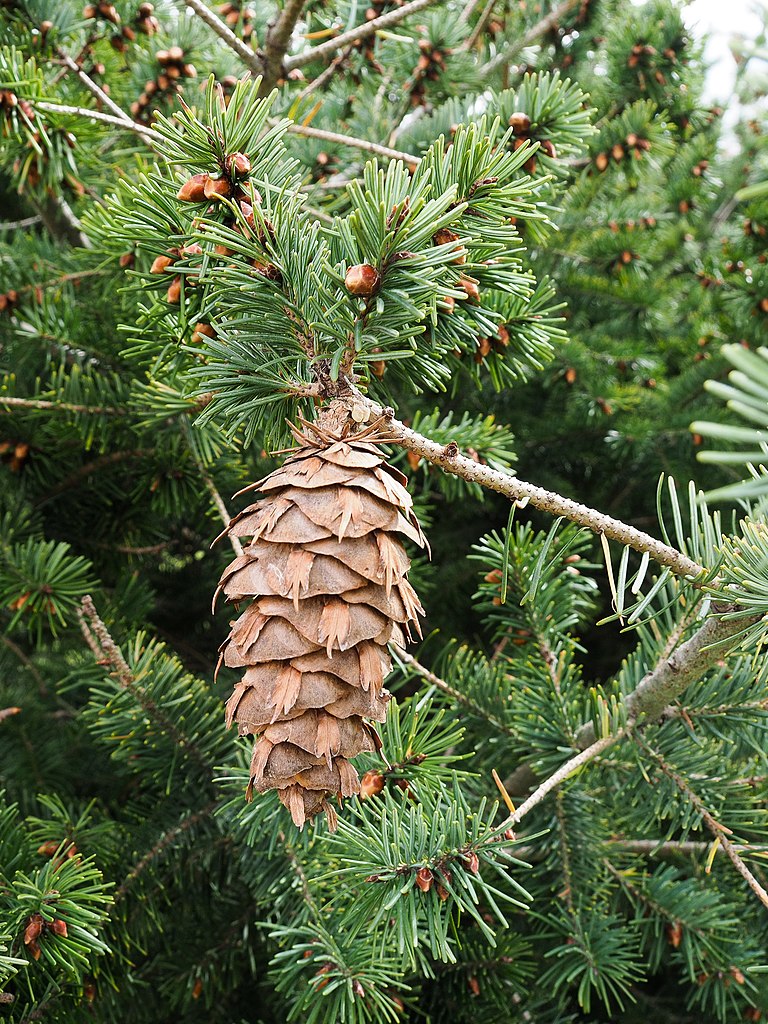
- Thin 3 fingered bracts
- Hanging pendant-like
- Falls to ground intact
Luis Apiolaza CC BY-SA
Cones – Male
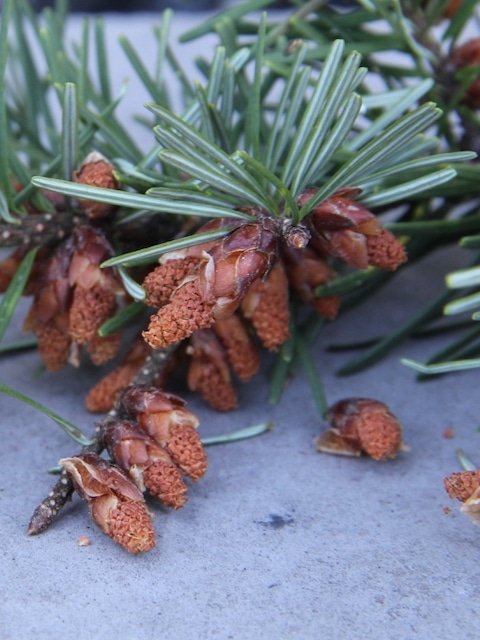
Cones (Male)
- Pointed
- Reddish-Brown
- Paper-like
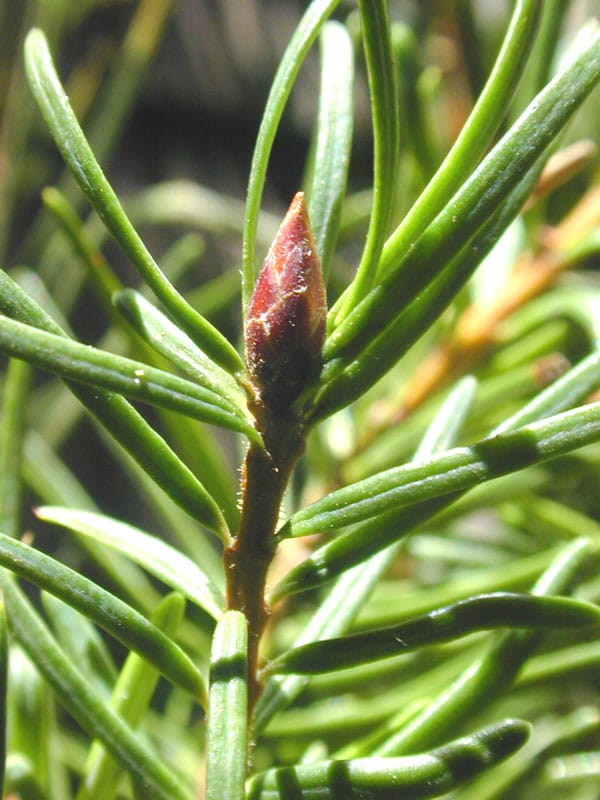
Leaves (needles)
- Flat and soft unlike sharp, squared spruce needles
- Grows in all directions like bottle brush
- Two lighter lines on the underside of needle
- Then connection to stem
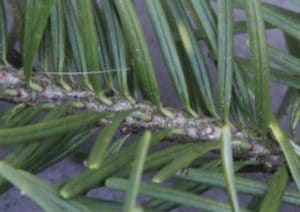
The original uploader was UtherSRG at English Wikipedia. CC BY-SA

Bark
- Deeply furrowed which is uncommon among conifers in our area
- Gray to brown. Brown is more common within the furrows
Did you know?
Douglas fir seeds are a sought-after source of nutrition for many small animals, including chipmunks, shrews, and red squirrels? In addition, the sap of the Douglas fir tree is a delightful treat for bears.
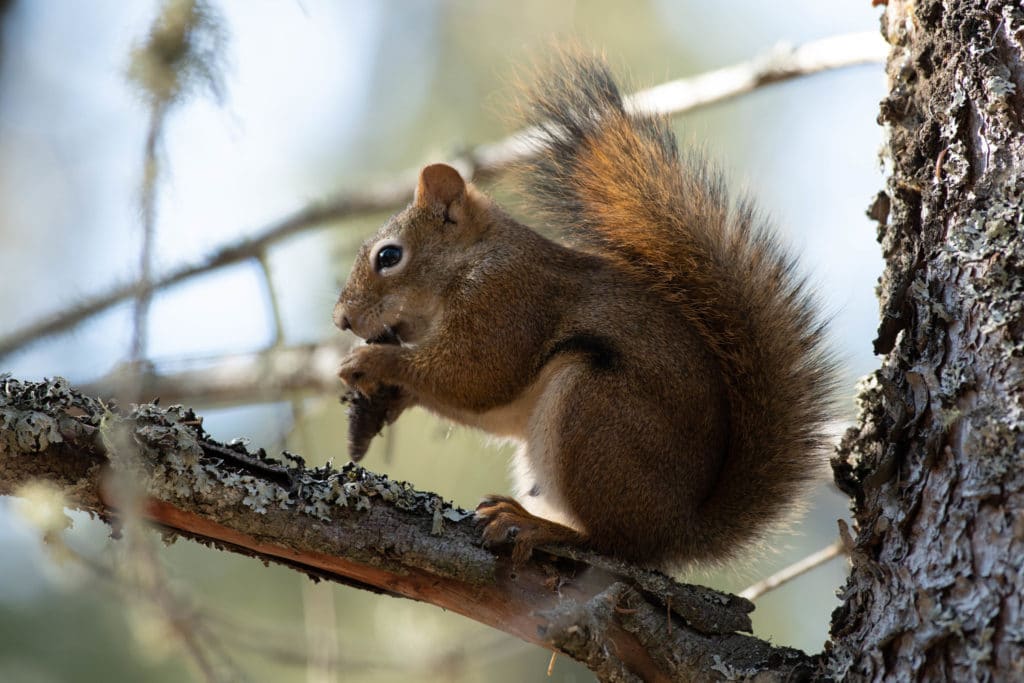
Distribution of Douglas-fir in the western US
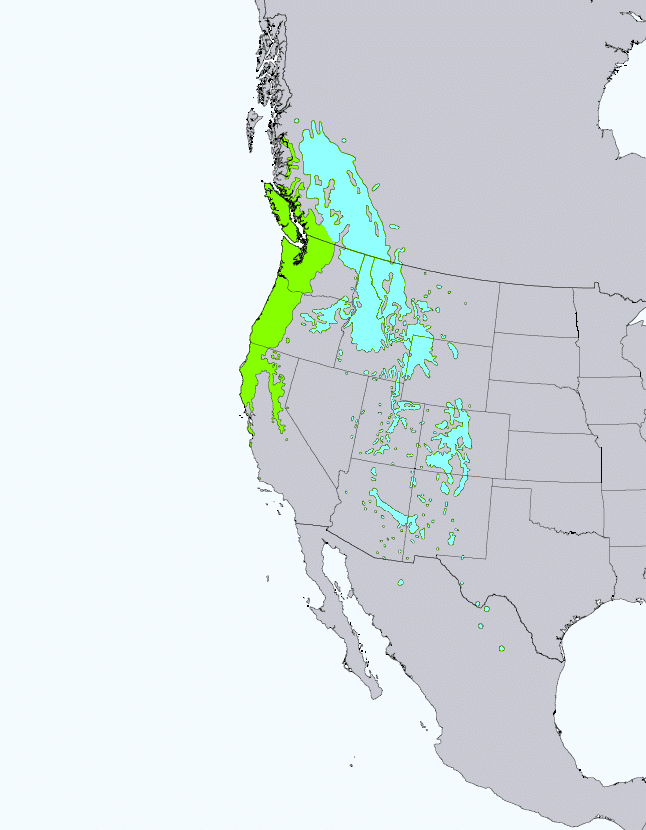
Green: Pseudotsuga menziesii subsp. menziesii Blue: Pseudotsuga menziesii subsp. glauca.
Public Domain: US Geological Survey
Distribution of Douglas Fir in Washington state
Douglas-fir is broadly distributed throughout Washington’s forests with large populations on both the east and west sides of the Cascades. It is especially prevalent in the lower elevation areas in the western Cascades, Snoqualmie Pass, Gifford Pinchot National Forest, and the perimeter of the Olympics.
Mushrooms Found With Douglas Fir
Helvella
Helvella compressa
Helvella dryophila
Helvella vespertina
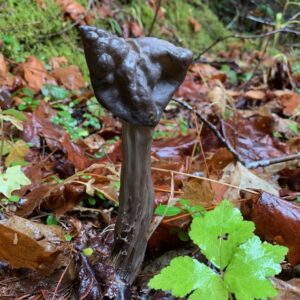
Gomphidius
Gomphidus oregonensis
Gomphidius subroseus
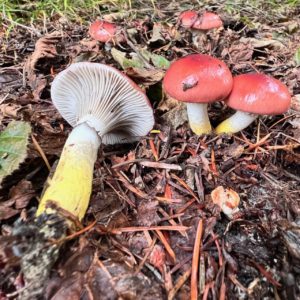
Strobilurus

Craterellus tubaeformis
Yellowfoot Chanterelle
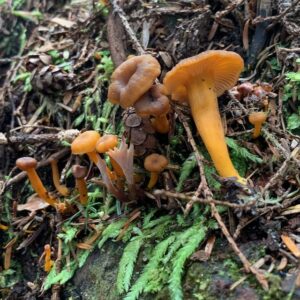
Chanterelle
Cantharellus formosus
Cantharellus cascadensis
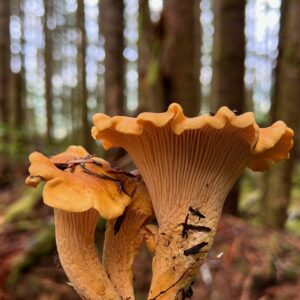
Laccaria amethysteo-occidentalis
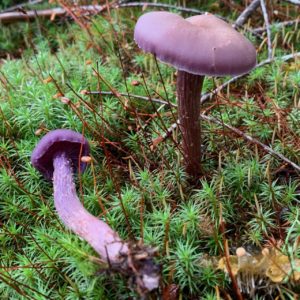
Ramaria formosa
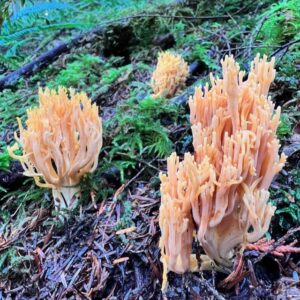
Amanita aprica
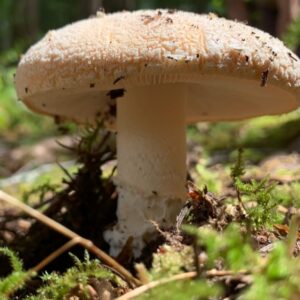
Hericium abietis
Bear’s Head
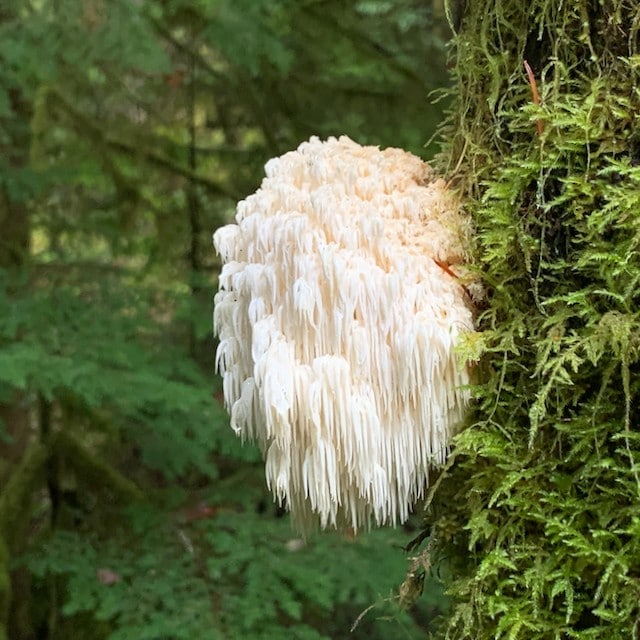
Armillaria ostoyae
Honey Mushroom
